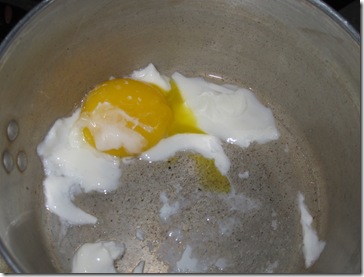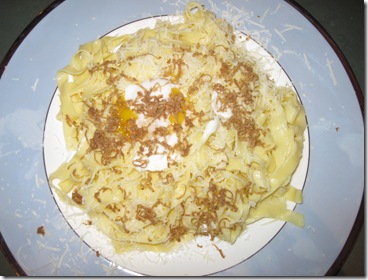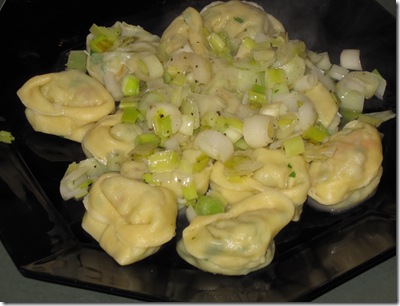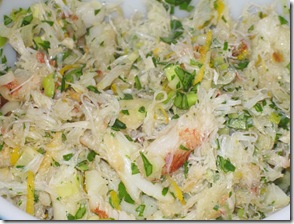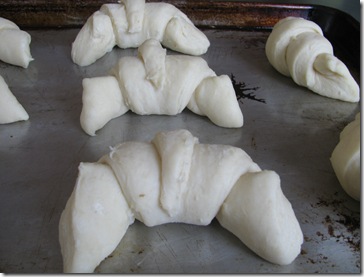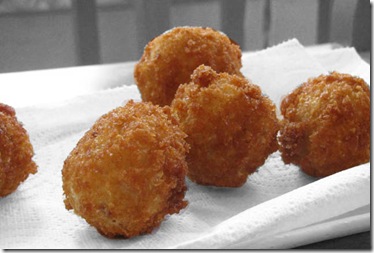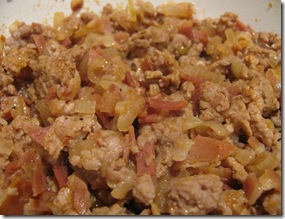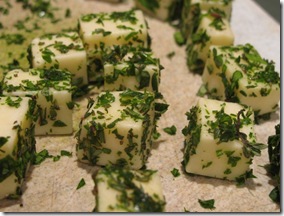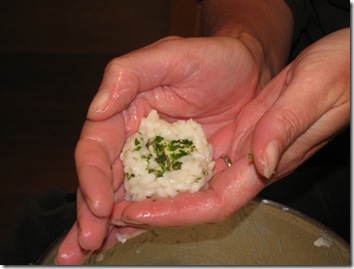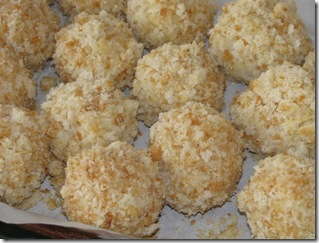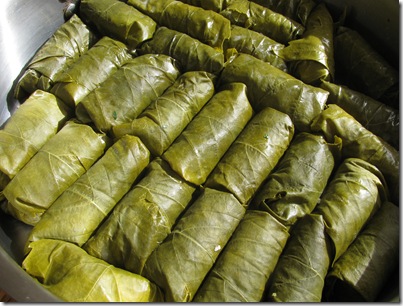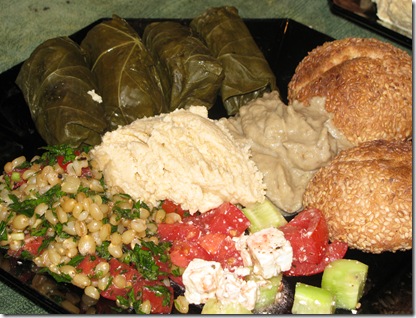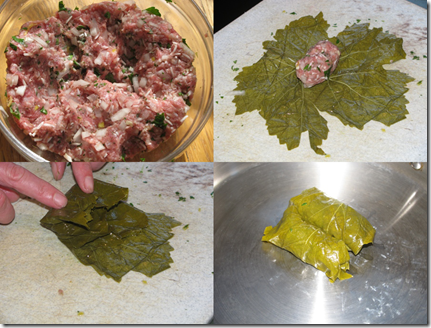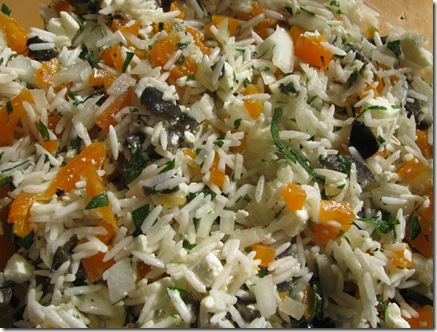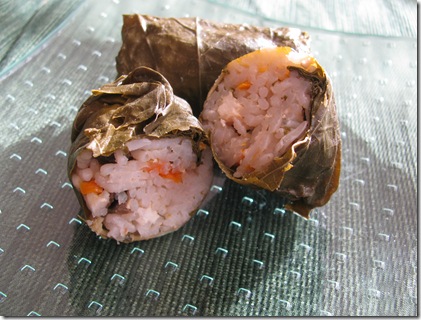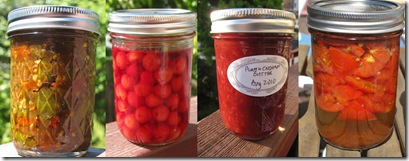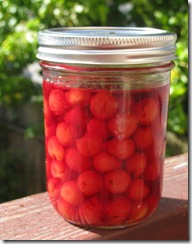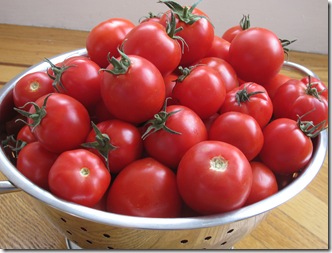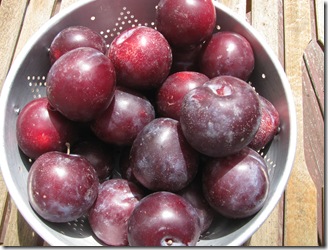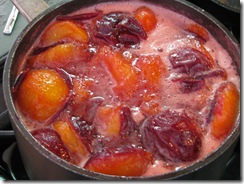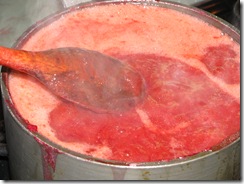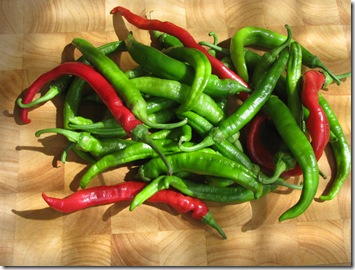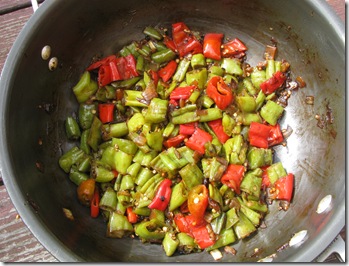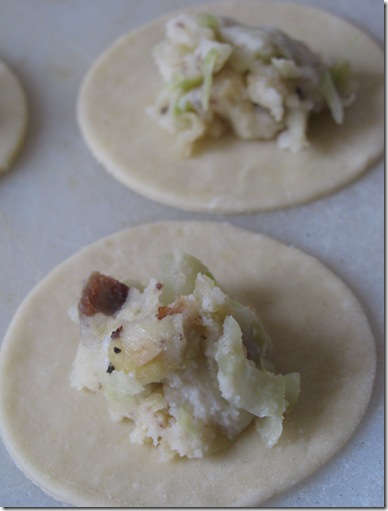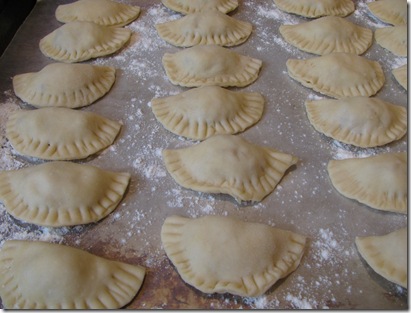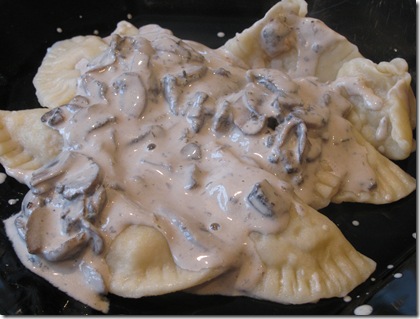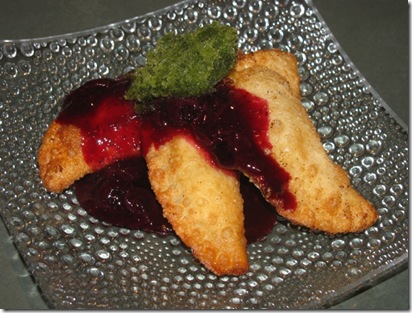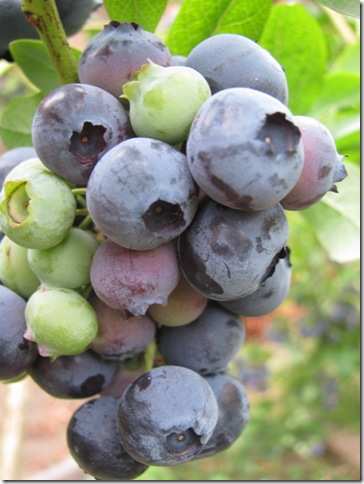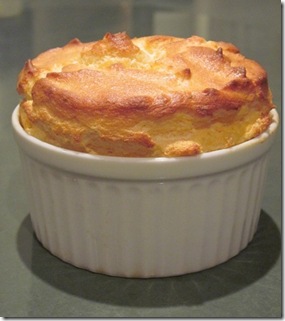
This month we were honored to host the Daring Cook’s November challenge. Before going any farther, we want to thank all the DC’s who posted their results in the forums – your creativity and sense of fun with the challenge was so inspiring! We learned so much from everyone.
When we first joined the Cooks, we started to think about what we would choose in the highly unlikely event that we were selected as host. We quickly set our hearts on soufflé – it seemed like the epitome of Daring Cookery – something that is classic, known around the world, is easy to procure ingredients for and that scares even seasoned cooks. So far so good.
When were were actually selected to host, we then had to set about choosing recipes that we thought were good and that could be reliably repeated. We wanted a dessert soufflé and also one or two that could be a main dish, appetizer or side dish. Not so easy.
We determined that we’d publish a cauliflower soufflé recipe as one of our options. We reviewed a lot of different recipes and saw that they were all pretty much variations on the same core set of ingredients: roux + egg yolk + cheese + filling + egg white. We chose one that looked straightforward. Yuck. My notes described it as eggy and dense. So we tried another. Not much improvement. Then we started tweaking – was it too much cauliflower? too much cheese? too wet? more egg whites? We tweaked as many of the variables as seemed right, while still following the pro forma recipe. After a parade of cauliflower, er.. dishes, we were getting despondent. How could soufflé have this reputation of being light and fluffy and dramatic when everything we did yielded gooey pudding?
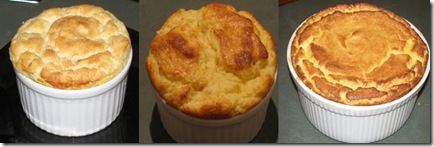
just peeking over the edge – three cauliflower soufflés
We gave up. But in the process of trying to find an alternate recipe, I noticed that none of the pictures of savory soufflés looked any better than what we were turning out. In fact, our looked pretty darned good compared to most of them.
So we started on a path of rethinking everything. Our first attempt was to beat the egg yolk over a hot water bath as you do for a sabayon. Presto! This tripled the volume of the egg yolks, making a stable foam by gently cooking the egg yolk as air was being beaten into it. We tried this on a watercress soufflé and it was, if anything, almost too light, but we sure weren’t going to quibble.
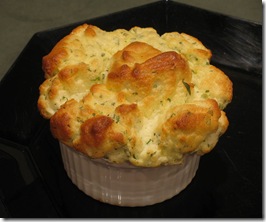
Watercress Soufflé using the sabayon technique
Our dear virtual friend and Daring Cook
Audax Artifex, host of the Daring Cooks
Sushi challenge, stepped it up to a whole new level. We were right – everything that you think about soufflé is probably wrong – but we didn’t take it nearly far enough.
Here are some tips based on his research – and that we have tested and proven to be effective:
Avoid fats in your filling as they cause the egg whites to break down and the soufflé won’t rise. To the extent that you do use fat, make sure that it is encapsulated or stabilized. This is why our sabayon technique worked, as it stabilized the fat in the egg yolk by cooking it gently and incorporating air into it. However you’re better off skipping the yolks and the roux entirely. And use low-fat milk rather than cream. That contradicted everything I thought I knew about French food right there!
Use cornstarch (aka corn flour) instead of your roux. Cornstarch will encapsulate the fats in, say, grated cheese, and also provide strength to your soufflé so it doesn’t collapse right away. We made our Banoffee soufflé without cornstarch and it rose gorgeously, but immediately plummeted. Corrected that mistake the second time around.. The starch can be used with cocoa powder in a chocolate soufflé, or simply blended with a vegetable puree or cheese for a savory soufflé.
Add any fat in grated form into the mixture which ensures that the egg whites are set before the grated fat melts. Either add the solid fatty ingredient in a finely grated form to a nearly set sauce (like chocolate), or add the fatty food and corn-flour to the hot sauce and beat really hard while the sauce cools to divide the fat into fine droplets that solidify and are coated by the sauce.
So why are traditional recipes repeating the same old mistakes? I really don’t know. Dessert soufflés generally rise much more dramatically than savories – largely as they involve less fat and use a greater ratio of egg whites to filling. What we do know is:
- that the Daring Cooks turned out some spectacular soufflés and you can see their results and get their recipes here – the creativity of their dishes was astounding
- Soufflé is not a complicated or temperamental dish to make (provided that you ignore nearly every recipe that’s been published in the past)
- Just about any flavor combination can be translated to a soufflé
- Even when a soufflé falls, it still (almost always) tastes great
So with all that said, we’re publishing two brand new recipes that take into account everything we learned along the way. We're also posting the original challenge recipes that honestly were good and rose proudly the first time, but that we’ll probably reformulate when we make them again (but time and our cholesterol counts prevent us from making and retesting before posting time) and a link to
the original Daring Cooks write up which contains some additional tips and links for making a souffle.
Horseradish Soufflé
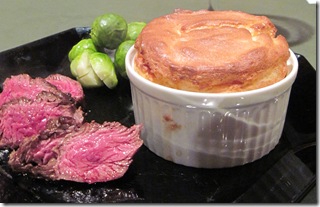 This soufflé was intensely horseradish-y. It had a perfectly crisp skin and creamy interior. We put steak on the menu as a pairing to it. This is maybe one of Linda’s new all-time favorites.
This soufflé was intensely horseradish-y. It had a perfectly crisp skin and creamy interior. We put steak on the menu as a pairing to it. This is maybe one of Linda’s new all-time favorites. Serves 2
2 oz / 57g Sharp Cheddar cheese
2 Tbsp Milk
2 Tbsp Horseradish
1 1/2 tsp Cornstarch
Salt and pepper to taste
2 Egg whites
1 oz Butter
Panko crumbs (or regular breadcrumbs) to coat the dishes
Preheat the oven to 375 degrees F.
Prepare 2 1-cup soufflé dishes by buttering them, then coating evenly with panko crumbs. Set aside in the refrigerator while you prepare the soufflés.
Grate the cheese.
Heat the milk gently in a medium saucepan. Stir in the cornstarch and stir to dissolve thoroughly. Add the cheese and horseradish and stir until the cheese melts. Remove from heat. Add salt and pepper to taste.
Beat the egg whites until they are stiff peaks.
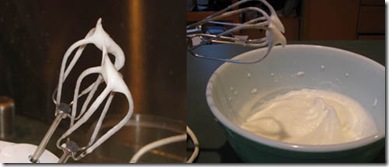
left: stiff peaks right: not yet ready
Fold a small amount of the egg whites into the cheese mix. Working in 2-3 batches, fold the cheese mix into the remaining egg whites.
Remove your prepared soufflé cups from the refrigerator and gently spoon the soufflé mix into them. smooth the tops with a spatula and clean thoroughly around the rim – if you don’t do this last step the soufflés will rise at a rakish angle.
Bake 15-18 minutes or until golden brown. Serve immediately.

Banoffee Soufflé with salted Pistachio Brittle and Chocolate Sauce
Banoffee pudding is a British dessert that combines bananas and toffee. We created this interpretation of the pudding as a special dessert for Dave’s birthday. The brittle recipe is adapted from Bon Appétit – it makes a lot more than you need (I actually made a third of the recipe and we still had leftovers) however the leftover toffee is yummy in its own right. I also spooned out some of the toffee before adding the nuts, so that I’d have a just plain brittle for the soufflé. Serves 3 Salted Pistachio Brittle 
2 cups Sugar
1 cup Corn Syrup
1 cup Water
Pinch Salt
2 Tbsp Butter
1/2 tsp Baking soda
2 cups pistachio nuts, shelled
1 Tbsp Flaked sea salt or Kosher salt
Spread half the butter on a baking sheet, then set aside.
Heat the sugar, water and corn syrup in a heavy pot over medium-high heat until it reaches 330 degrees F. I found this to take about 20 minutes both times I made the recipe. Keep an eye on it as the temperature really rockets toward the end.
Remove from heat and add the remaining 1 Tbsp butter and baking soda, then stir in the nuts. Spread the mix quickly on the prepared baking sheet, evening it out with a spatula as necessary. Sprinkle with the coarse salt and let cool.
Caramelized Bananas
4 Tbsp - 1/2 oz Brown sugar
1 Tbsp Butter
2 Tbsp Water
2 Bananas, sliced into 1/4 inch slices
Melt the brown sugar, butter and water together. Add the banana slices and gently stir until the sugar thickens and the bananas are evenly coated.
Remove the slices to a plate and set aside 6-8 slices to use as garnish.
Caramelized Banana and Toffee Soufflé
3 egg whites
1/4 tsp cream of tartar
Caramelized banana from recipe above
1 1/2 tsp Corn starch
2 Tbsp toffee, smashed into small bits (I used toffee without nuts, but that's just me..)
Butter and brown sugar for preparing the soufflé cups
Preheat the oven to 400 degrees F
Butter the soufflé cups thoroughly and then coat evenly with brown sugar. Set aside in the refrigerator (some recipes say that this helps the soufflé to rise. I found that it didn’t do any harm and got the dishes out of my way while working on the rest of the steps).
Mash the banana and blend with the corn starch. We used an immersion blender for this, but you could do just as well with a whisk or spoon. Stir in the toffee bits.
Combine the egg whites and cream of tartar. Beat until stiff, but not dry. Spoon the banana mix into the egg whites, then pour into your prepared soufflé dishes. As always, even the tops and clean the rims of the dishes with a damp finger to assure an even rise.
Bake for 15 minutes, garnish with reserved banana slices, pistachio brittle and chocolate sauce as desired.
Chocolate Sauce
1 oz Sugar
2 oz Water
2 oz - 20 grams 70% Chocolate
Heat the ingredients until smooth, then keep warm to serve.
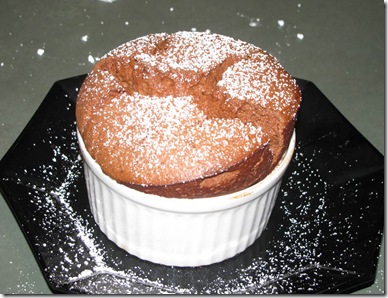
Chocolate Soufflé
Serves 6. Adapted From BBC Good Food Recipe by Gordon Ramsay. As we discovered, dessert soufflés rise much more reliably than savory ones to, so there’s really no need to tweak this recipe further – it is delicious as is. However, if you want to change out the cream for milk, you won’t be putting your splendid dessert at any risk at all. Ingredients FOR THE DISHES
- 2 Tbsp (30 ml) 1 oz (30g) unsalted butter, for greasing
- Cocoa powder or finely grated chocolate
FOR THE CREME PATISSERIE
- 2 tbsp (30 ml) (18 gm) (2/3 oz) plain (all-purpose) flour
- 2 tsp (10 gm) (0.35 oz) caster (superfine) sugar (regular sugar is OK)
- ½ tsp (4½ gm) (0.15 oz) corn starch (aka corn flour)
- 1 medium egg yolk
- 1 medium whole egg
- 4 Tbsp (60 ml) milk
- 5 Tbsp (75 ml) heavy cream (or double cream)
- 3 oz (90gm) good-quality dark chocolate preferably 70+% cocoa solids, broken in pieces
- 2 Tbsp (30 ml) (15 gm) (½ oz) unsweetened cocoa powder
- Optional: 2 tsp orange zest or 2 tsp minced chipotle chile en adobo or 1 tsp chipotle chile powder. (The chile version is a Monkeyshines favorite!)
- Optional: powdered sugar for dusting
FOR THE EGG WHITES
- 6 medium egg whites
- 6½ Tbsp (95 ml) 3 oz (90g) superfine/caster sugar (if you don’t have it, regular sugar is OK)
Directions: - Heat oven to moderate 375 ˚F/190 ˚C/gas mark 5.
- Take four 1 cup/~240ml soufflé dishes and brush them completely with softened butter. Tip a little cocoa powder or grated chocolate into each dish, roll the dish around tilting it as you do so it is evenly lined all round.
- For the crème patisserie, mix the flour, sugar and corn starch into a small bowl. Put egg yolk and whole egg into a medium sized bowl, beat lightly, then beat in half of the flour mixture to give a smooth paste. Tip in the rest of the flour mixture and cocoa powder and mix well.
- To make the ganache, pour the milk and cream into a pan and bring just to the boil. Remove from the heat. Add the chocolate and beat until it is melted and smooth with no lumps.
- Gradually stir hot chocolate ganache into the paste from step 3, and add the orange zest or chile if using. This is your crème patisserie.
- Whisk the egg whites to soft peaks with an electric whisk. Sprinkle in the sugar as you are mixing. Keep whisking to give stiff, firm peaks to give volume to the soufflés.
- Stir about 2 tbsp (30 ml) of the beaten egg whites into the crème patisserie. Carefully fold in a third of the rest, cutting through the mixture. Fold in another third (take care not to lose the volume), then fold in the rest.
- Spoon the mixture into the dishes. Run a spoon across the top of each dish so the mixture is completely flat. Take a little time to wipe any splashes off the outside of each dish, or they will burn on while cooking.
- Bake the soufflés for 15-17 minutes.
- The soufflés should have risen by about two thirds of their original height and jiggle when moved, but be set on top.
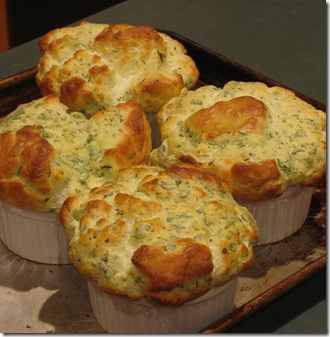
Watercress Soufflé
Next time we make these soufflés, we’d add a teaspoon or two of corn starch to help them keep their puffiness a little longer. We probably would still add the egg yolk to help give the soufflé some body and richness. Serves 4 as an appetizer or side dish, 2 as an entree Ingredients 2 Tbsp 1 oz/30g butter plus additional for the soufflé dish
3½ Tbsp (55 ml) 1 oz/30g plain (all purpose) flour
1 cup/8 fluid oz (240ml) milk
½ cup (120 ml) 2 oz/60g parmesan cheese, finely grated plus additional for the soufflé dish
1 cup (250ml) 2 oz/60g finely chopped de-stemmed watercress (can substitute spinach) – about 1 large bunch (this measure is the leaves after they’ve been washed, de-stemmed, and chopped)
4 large eggs, separated
½ tsp (2½ ml) (3 gm) (.1 oz) prepared mustard
¼ tsp (1¼ ml) (1½ gm) (0.05 oz) cream of tartar*
Salt and pepper to taste
* If you can’t find cream of tartar, a dash (~ ½ tsp) of lemon juice can be substituted
Directions: 1. Butter the soufflé dish(es) thoroughly, then grate a small amount of cheese in each dish and tap so that the sides are evenly coated with the cheese. Place the dish(es) in the refrigerator until needed (according to some sites, this helps the soufflé climb).
2. Preheat the oven to moderate 350˚F/180˚C/gas mark 4
3. Wash and chop the watercress if you haven’t already.
4. Finely grate the parmesan cheese
5. In a medium sized saucepan, melt the butter over medium heat, then stir in the flour to make a roux. Cook 1 minute, then add the milk, a little at a time, and stir until just thickened, about 1 minute. Add the cheese and stir until it’s just melted. Remove from heat then add the watercress and salt and pepper.
6. In a larger pan, bring water to a gentle simmer. Whisk the egg yolks in a bowl set just over this water until pale and slightly foamy – about 6 minutes. (I held the bowl just above the simmering water to be sure I didn’t cook the eggs)
7. Mix the egg yolks into the watercress sauce.
8. Beat the egg whites and cream of tartar until they form stiff peaks yet are still glossy.
9. Fold the egg whites into the sauce in 3 additions so that it’s evenly mixed, but you don’t lose too much volume.
10. Remove the soufflé dish from the refrigerator and spoon the mix into it. Use a spatula to even the tops of the soufflés and wipe off any spills.
11. Bake 25 minutes for small dishes or 40 minutes if using a large soufflé dish, then serve immediately.
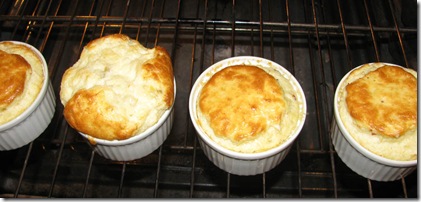
Crab and Artichoke Soufflé
This recipe was tasty as is, but next time we make it, I’d likely forego the roux entirely and replace it with 2-3 tsp corn starch. I’d also whip the egg yolks over hot water, using the sabayon technique from the watercress soufflé, above, to add a little more drama to the final product. Serves 4 as an appetizer or side dish, 2 as an entree Ingredients 1 cup (250 ml) 4 oz/120g crab meat, flaked and lightly-packed
½ cup (125 ml) 2 oz/60 g finely chopped cooked artichoke hearts (frozen, fresh or from a jar is OK, but please don’t use the marinated-in-oil style), Alternatively, lightly sautéed leeks would be nice here too.
2 large egg yolks
3 large egg whites
½ tsp (2½ ml) (3 gm) (.1 oz) salt
¼ tsp (1¼ ml) (1½ gm) (0.05 oz) cream of tartar*
1 cup (250 ml) 2 ½ oz (75g) Gruyere cheese, shredded
½ tsp (2½ ml) (2 gm) (0.07 oz) white pepper
1 Tbsp (15 ml) (14 gm) (½ oz) butter
1 Tbsp (15 ml) (9 gm) (1/3 oz) flour
1 tsp (5 ml) (3 gm) (.1 oz) dried chives or tarragon
1 cup 8 fluid oz (250ml) milk
Salt and pepper to taste
Additional butter and bread crumbs for preparing the dishes
* If you can’t find cream of tartar, a dash (~ ½ tsp) of lemon juice can be substituted
Directions: 1. Preheat oven to moderate 375 ˚F/190 ˚C/gas mark 5
2. Prepare dishes – you can use one 2-quart (US)/1.9 litre or six 1-cup/240 ml soufflé dishes – by buttering the dish, then coating with bread crumbs. (You may have some left over soufflé mixture if you go with the smaller soufflé dishes.)
3. Chop the artichoke hearts into ¼”/0.5cm dice. If you use frozen or from a jar, then there’s no need to cook them. If you are using fresh, then steam gently until just softened, about 5 minutes or sauté over low heat until just ever so lightly browned.
4. In a medium saucepan, melt the butter, then stir in the flour to make a
roux. – you just want to get the flour evenly blended to a paste, not cook the roux for any length of time. Gradually stir in the milk, mixing all the time. Add herbs, then the cheese. Stir until the cheese is melted and you have a thick sauce. Remove from heat.
5. Beat the egg yolks well and gently warm them, either according to the instructions for watercress soufflé (above) or by adding some of the cheese sauce. Gradually stir the egg yolks into the cheese sauce until well blended.
6. Add the artichoke and flaked crab meat to the cheese sauce.
7. Beat the egg whites until at the stiff peak stage
8. Fold the whites in thirds into the sauce.
9. Spoon the mixture into your baking dish and level the tops using a spatula. Be sure to wipe up any spills and make sure the edge is clean.
10. Bake for 40 min if you’re using a large soufflé dish or 25 min if using smaller dishes – the soufflé should be richly browned.
Thanks to all the Daring Cooks for playing along and to any of you who’ve made it all the way down to the end here.
Dave and Linda from Monkeyshines in the Kitchen chose Soufflés as our November 2010 Daring Cooks’ Challenge! Dave and Linda provided two of their own delicious recipes plus a sinfully decadent chocolate soufflé recipe adapted from Gordon Ramsay’s recipe found at the BBC Good Food website.
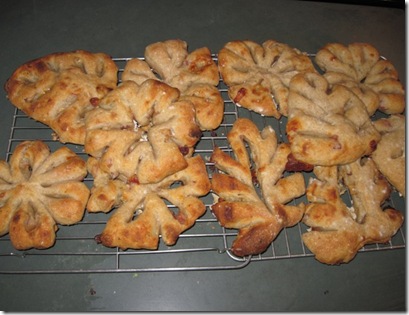 This year we’ll be away for Christmas. As a result, the house isn’t decorated for the holidays. No tree, no lights. These halls are not decked. Still, I hanker for the glitz of Christmas. So instead of traditionally shaping a batch of Pear – Blue Cheese – Bacon Sourdough Fougasse, I opted for Christmas trees and Snowflakes.
This year we’ll be away for Christmas. As a result, the house isn’t decorated for the holidays. No tree, no lights. These halls are not decked. Still, I hanker for the glitz of Christmas. So instead of traditionally shaping a batch of Pear – Blue Cheese – Bacon Sourdough Fougasse, I opted for Christmas trees and Snowflakes. 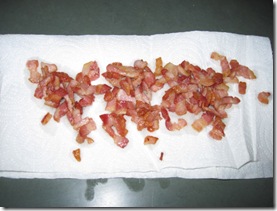
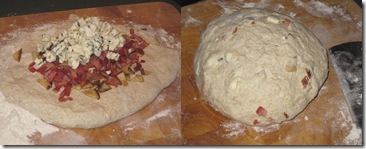
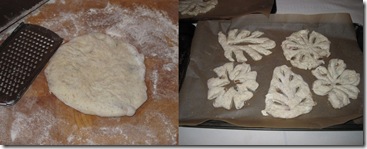

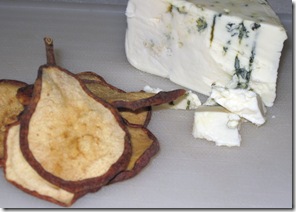
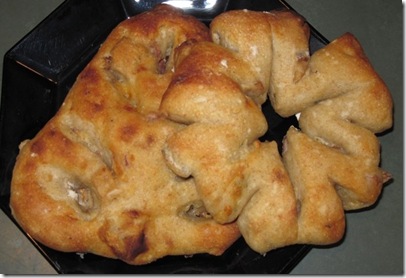
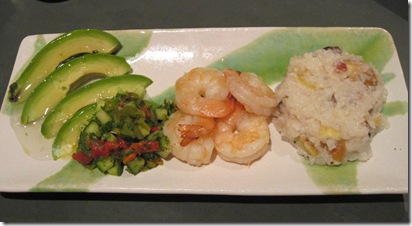
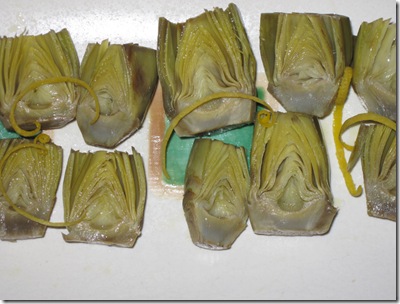
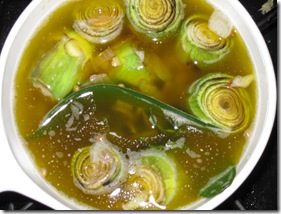
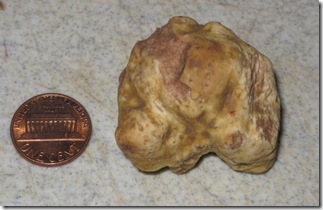 I followed the challenge recipe - water temperature no higher than 180F, cook for 3 1/2 minutes - and all looked good until I came to remove the egg from the water. I scooped it up with a slotted spoon, only to find that the white drained away through the slots...
I followed the challenge recipe - water temperature no higher than 180F, cook for 3 1/2 minutes - and all looked good until I came to remove the egg from the water. I scooped it up with a slotted spoon, only to find that the white drained away through the slots... 